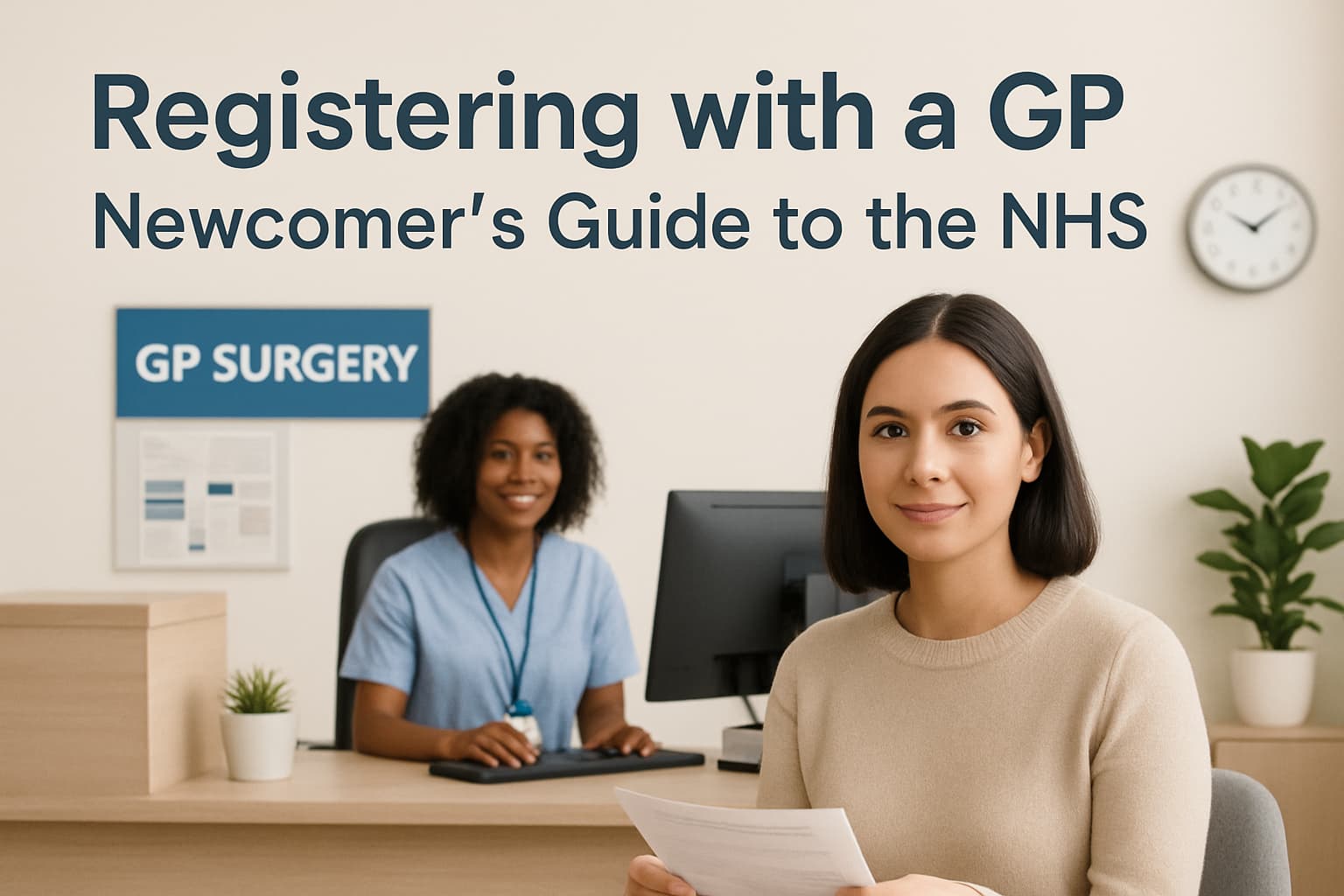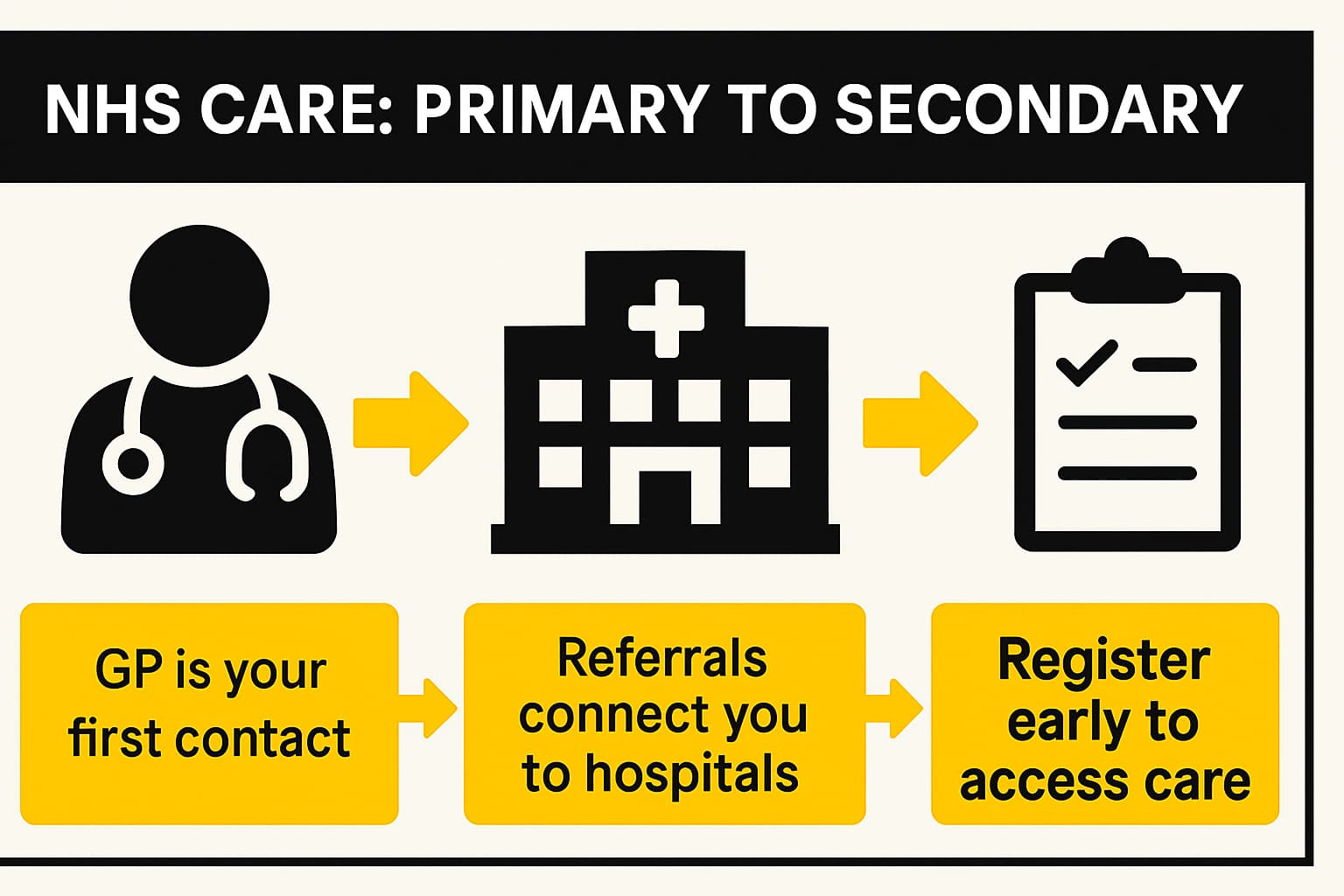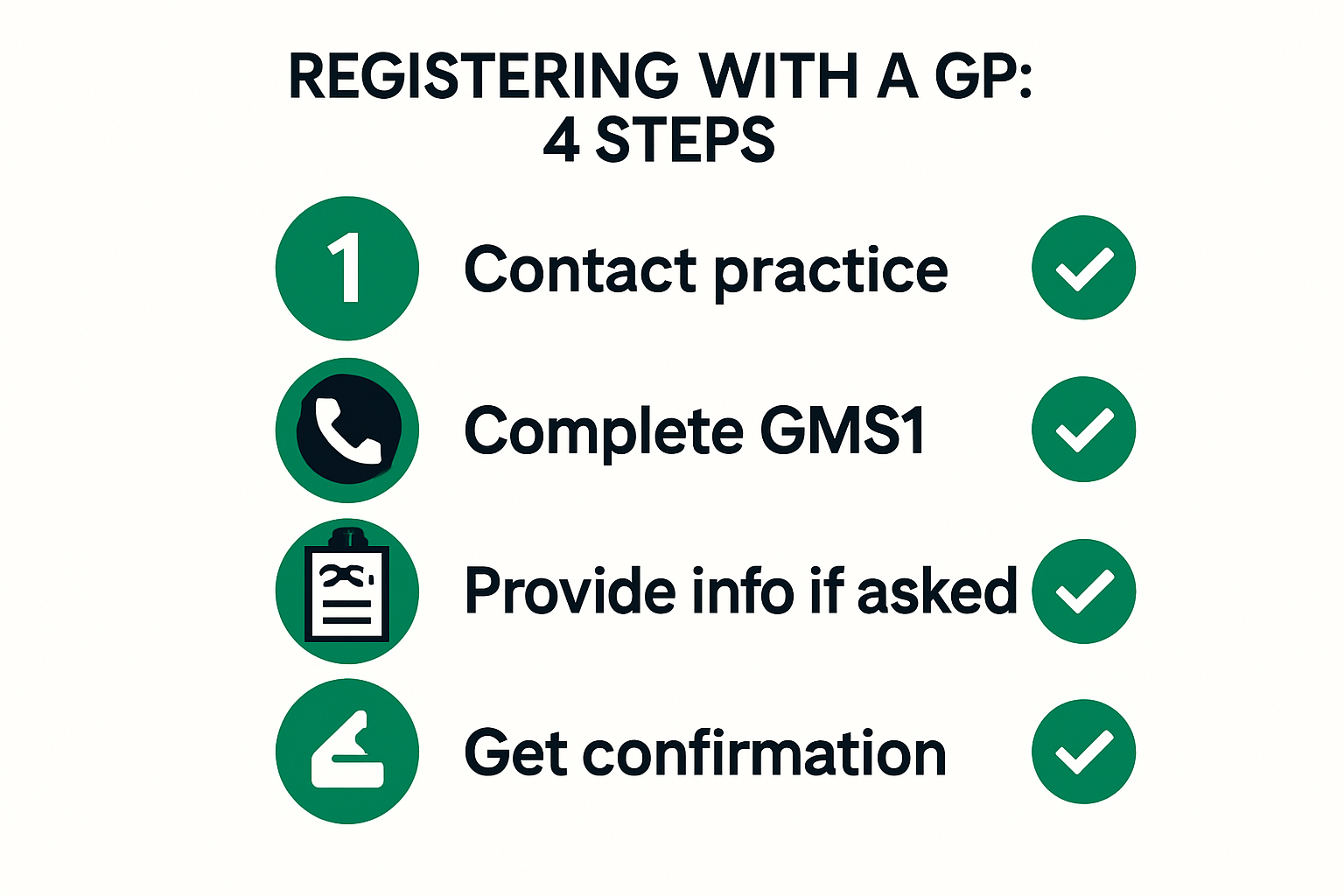Registering with a GP: Newcomer’s Guide to the NHS

Just arrived in the UK and need everyday healthcare? Registering with a GP is your fastest route to routine care, referrals, and prescriptions. This guide breaks down how the NHS works, who can register, what you need, and a step-by-step process to sign up today.
You will also learn your rights if you lack ID or proof of address, how to pick the right practice, and what is free vs paid. If you are preparing for the Life in the UK Test, we connect these essentials to high-yield test prep tips and tools.
What the NHS Is and Why Registering with a GP Matters
Understanding the NHS makes registering with a GP far simpler. The NHS provides most healthcare in the UK, with GPs acting as your first point of contact for non-emergency issues. Once registered, you can book appointments, get routine prescriptions, and be referred to hospital specialists when needed.
NHS structure in brief
At a high level, NHS care is split into two layers:
Primary care: GPs, dentists, pharmacists, and opticians who handle day-to-day care and prevention.
Secondary care: Hospital-based care and specialists you usually access via a GP referral.
Because primary care is the gateway, a GP practice is where you start most non-urgent health journeys.
Why GP registration is essential
Routine care: Get advice, diagnosis, and management of common conditions.
Referrals: Access to hospital clinics and diagnostics typically requires a GP referral.
Prescriptions: Ongoing medication and repeat prescriptions are managed via your practice.
Medical records: Your history follows you across NHS services, improving continuity of care.

New to the UK and studying for the Life in the UK Test? A quick primer on NHS basics can boost your score. For an overview of the test itself, see What is the Life in the UK Test?
Who Can Register and Your Rights
Most people living in the UK can register with a GP practice in their local area. Practices have catchment areas and generally accept patients who live within them. Crucially, in England you do not need proof of address, photo ID, or immigration status to register, and practices should not refuse registration for lack of documents.
See the NHS guidance on how to register with a GP surgery for official policy and your rights.
If you don’t have ID or proof of address
You should still be registered. If a receptionist requests documents, you can say:
“I understand the NHS says I do not need ID, proof of address, or immigration status to register.”
“I live within your catchment area and would like to register as a patient.”
Temporary vs. permanent registration
Permanent registration: You live locally (usually 3+ months). Best for ongoing care and repeat prescriptions.
Temporary resident: You are staying locally for up to 3 months (e.g., short study or work). You can still see a GP for necessary care.
What You Need to Register
Good news: you can register without documents. Still, having a few details ready can speed things up.
Information to have ready
Full name, date of birth, UK address, contact details
Previous GP details (if applicable), country and date of arrival
Current medications and repeat prescriptions
Key medical history, allergies, and vaccination history
NHS number if you have one (not required to register)
Helpful documents (optional but useful)
Any ID (passport, BRP, driving licence)
Proof of address (tenancy, utility bill, bank letter)
NHS number (if known)
Immunisation records, repeat prescription slips
If asked to complete paperwork, practices often use the GMS1 registration form.
How to Find the Right GP Practice
Start local and practical: consider distance, opening hours, accessibility, interpreters, and online services.
Using the NHS “Find a GP” service
Go to the NHS Find a GP page.
Enter your postcode to see nearby practices.
Open each practice profile to view opening hours, services, and registration options.
What to look for when comparing practices
Access and catchment: Are you inside their area? Is the location convenient?
Services: Online booking, repeat prescriptions, chronic disease clinics, interpreters.
Patient experience: Ratings and reviews on the profile and NHS surveys.
Registration method: Online forms available or in-person only?
Step-by-Step: Registering with a GP
Follow this simple sequence. Featured snippet tip: use these exact steps to get registered today.
Contact the practice.
Complete the GMS1 or online registration form.
Provide any supporting information if requested.
Receive confirmation and book your first appointment.
Step 1: Contact the practice
Call, email, or use the website form to confirm you are in the catchment and ask how they prefer registrations. If phones are busy, try sending a short email with your address, phone number, and request to register.
Step 2: Complete the GMS1 or online form
Key fields include your personal details, previous GP (if any), and medical history. Common mistakes:
Leaving contact details blank or typos in your phone/email.
Forgetting to list medications and allergies.
Thinking an NHS number is required—it is not.
Step 3: Provide any supporting information
Submit optional documents if you have them. If you cannot provide ID or proof of address, you should still be registered—refer to NHS guidance. You can say, “I understand NHS policy allows registration without ID or proof of address.”
Step 4: Confirmation and first appointment
Practices usually confirm by text, email, or letter within days. Ask about a new patient check and how to order repeat prescriptions. If you need care sooner, ask about urgent same-day appointments.

After You Register: Getting the Most from Your GP
Once registered, set up digital access and learn how to navigate referrals and repeat prescriptions.
Setting up online services and the NHS App
Create an online account through your practice to book appointments and order repeats.
Download the NHS App to view your records, prescriptions, and messages.
Ask your practice for linkage codes if needed for full access.
Choosing or changing your named GP
Practices assign a named GP for continuity. You can request a preferred GP for routine appointments. Moving area or unhappy with access? You can register with a different practice—just follow the same steps above.
Costs, Exemptions, and What’s Free
Free GP services
GP consultations and most primary care services are free at the point of use in the UK.
Emergency treatment is available regardless of registration status.
Prescription charges and exemptions
In England, prescriptions usually carry a standard charge per item. Many people qualify for free prescriptions based on age, income-related benefits, maternity, or medical exemptions. Learn who is exempt on the NHS page for free prescriptions and how to save money with a Prescription Prepayment Certificate (PPC).
Troubleshooting: If a Practice Refuses or Delays
Common reasons and your responses
“You are outside our catchment.” Ask if they can register you anyway or recommend a nearby practice. Check your postcode on Find a GP.
“We need ID or proof of address.” Politely say NHS policy does not require these to register.
“We are at capacity.” Ask when they will reopen the list and if they can signpost you to alternatives.
Escalation and support
Contact the hospital PALS service for advice and help navigating services.
Follow the official process for NHS complaints if you believe you were wrongly refused.
Special Cases: Students, Families, and Newborns
Children and immunisations
Register your child at your family GP so they can receive scheduled vaccines on time. The NHS lists the schedule here: NHS vaccinations and when to have them.
International students and short stays
If you paid the Immigration Health Surcharge (IHS) as part of your visa, you can access NHS services like a permanent resident. For short stays (under 3 months), register as a temporary resident. Learn more about the IHS on GOV.UK.
Mini Checklist: Register Today
Print or save this quick checklist:
Use Find a GP to shortlist nearby practices.
Contact your top choice to confirm catchment and registration method.
Complete the GMS1 form or online signup.
List medications, allergies, and any long-term conditions.
Provide optional ID/address if available—if not, still proceed.
Await confirmation, then set up online services and the NHS App.
For Test Takers: Nail NHS Questions with the App
Topics like understanding the NHS and registering with a GP appear in the Life in the UK Test. If you feel overwhelmed, the Life in the UK Test App helps you learn faster and remember more.
How the Life in the UK Test App boosts recall
Smart study assistant (Brit-Bear): Explains tricky points and keeps you on track.
Hard mode mock tests: Simulate exam pressure so the real test feels easier.
Readiness score: See when you are test-ready and avoid costly retakes.
Offline access: Study anywhere without data.
Complete handbook content: Optimized for mobile so you are never lost in the material.
Planning your journey to citizenship or settlement? Explore our guides to How to Get British Citizenship and Indefinite Leave to Remain. If you travel while your visa is digital, see our UK eVisa guide.
Download links
Ready to start? You can also learn how to book the exam in our step-by-step guide: How to book the Life in the UK Test.
Quick FAQs
Do I need ID or proof of address to register with a GP?
No. In England, practices should not refuse you for lack of ID, proof of address, or immigration status.
How long does GP registration take?
Typically a few days, though times vary by practice. Ask for an urgent appointment if you need care sooner.
Can I register if I am staying for under 3 months?
Yes. Ask for temporary resident registration. You can still see a GP for necessary care.
Is seeing a GP free?
Yes, GP consultations are free at the point of use. Prescription charges may apply in England.
Can I change GP practices later?
Yes. Use Find a GP to select a new practice and complete a fresh registration.